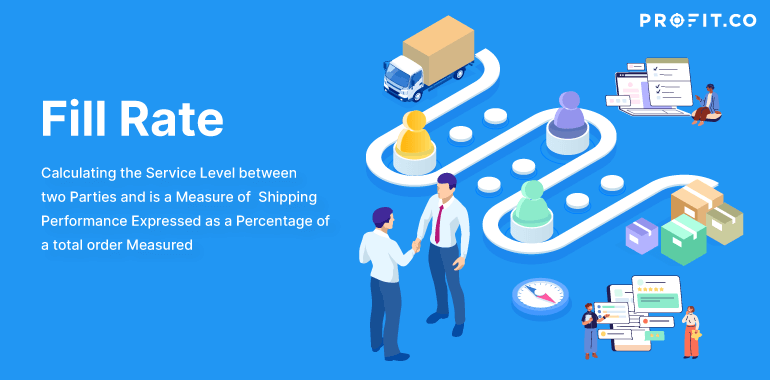Fill rate denotes the fraction of customer demand that meets their expectation through instant stock availability without any issue in backorders or missed sales. Mostly, fill rate established the exact fraction of demand that can be recovered or serviced in a better way if the overall inventory performance has to be improved. Managing these kinds of tasks in your organization can be hectic, but by using a business goal tracking software like Profit.co you can organize and manage your team and business goals methodically and can track the performance of your organization for a sure fire success.
If your business has a supply chain, then you should be very well informed about the supply chain metrics, because they are an integral part of maintaining an efficient business. These metrics are used to monitor your company and consequently, optimize it.
Read on to find out everything about this useful tool that will help your company evolve fast and easily.
What is the Fill Rate Metric and how it is calculated?
The fill rate is measured empirically by averaging the number of correctly serviced requests over the total number of requests.
While some definitions and calculations of this metric can vary greatly, fill rate helps- in the broadest sense- calculating the service level between two parties and is a measure of shipping performance expressed as a percentage of a total order measured. If you desire to optimize your company’s supply chain, this is one of the metrics you should definitely consider if you want to satisfy your customers’ demands and provide trustworthy services.
Fill rate metrics may refer to different aspects, but what connects them is that they imply considering the shipments and the orders you deliver:
- Line Count Fill Rate: provides you with a clear idea about the amount of order lines shipped on the initial shipment versus the amount of lines ordered.
- SKU Fill Rate: deals with the number of the stock keeping units ordered and shipped; Formula:
Number of SKUs Shipped on the Initial ShipmentTotal Number of SKUs Ordered
- Case Fill Rate: refers to the amount of cases shipped on the initial shipment versus the amount of cases ordered; Formula:
- Value Fill Rate: is concerned with to the amount of order line values shipped on the initial shipment versus the amount of cases ordered; Formula:
Number of SKUs Shipped on the Initial Shipment / Total Number of SKUs Ordered
The Ideal Fill Rate
Apart from taking into account the feedback received from your retailers, fill rate helps you see things clearly and shows what needs to be improved and also it showcases the performance of your company. According to a recent report regarding the ideal percentage of the fill rate, it has been discovered that leaders in fill rate exceed 98%, but the average hovers is somewhere around 95%.
How to Improve Your Fill Rate
Assessing your company’s fill rate performance will directly conduct your business to finding solutions on how to improve your services. Identifying opportunities for improvement when it comes to your business’ supply chain can be easily done once you have a clear view of what you are doing.
From using a sales order management software to keep your reps informed of your inventory data and improving the customer experiences, there are many ways in which you can optimize your business easily. It all starts with a right tool and the fill rate metric is definitely one of the best you can use.
